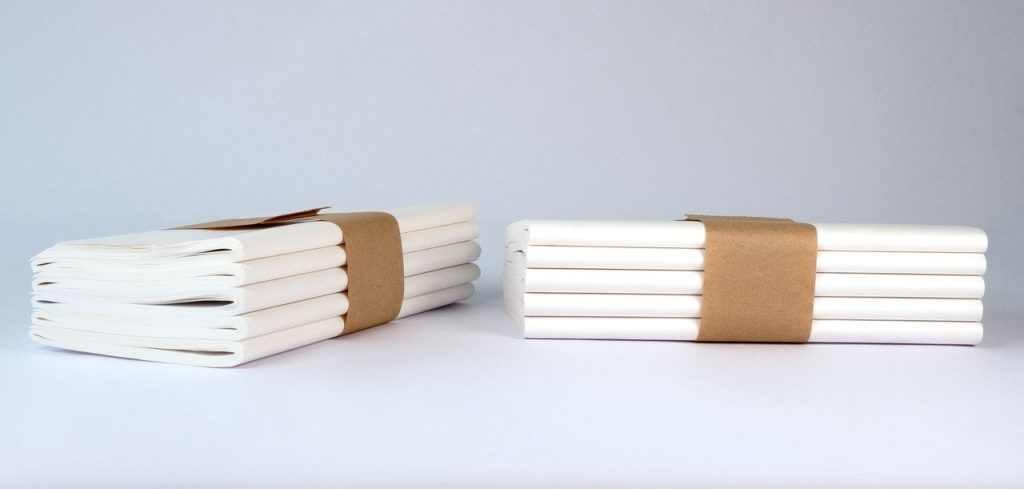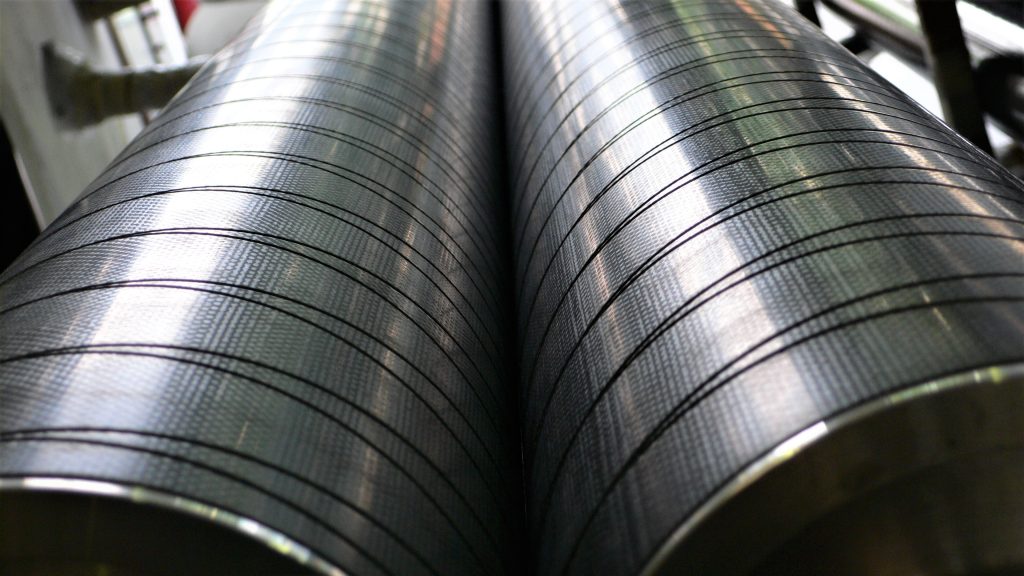Papermaking and Reglass’ rollers
High-performance carbon rollers for papermaking: the best technologies to guarantee both quality and a fast and efficient process.
What is paper?
Paper is a material consisting of cellulose fibers obtained from tree plants, potentially mixed with other materials, for a wide range of possible uses: writing and printing (graphic paper), packaging (cardboard and construction paper), the creation of duct tape cores, the production of abrasive papers, of wallpaper (lining paper) and even of personal and domestic hygiene items (tissue paper).
The production process
The papermaking process usually involves the following steps:
- creation of a cellulose pulp starting from raw materials,
- the forming of the sheet and the creation of parent reels,
- the setting-up, i.e. the transformation of parent reels into flat sheets or reels of dimensions suitable for subsequent processing (e.g. rotary printing on specific formats or reels for subsequent transformation into finished goods),
- the subsequent converting processes of the reels into finished goods.
Reglass’ rollers
Many of the steps of papermaking rely on the use of rollers and cylinders: for any specific application that may require it, Reglass can offer carbon fiber parts of excellent mechanical performance, customized accordingly to the specific characteristics of each machine and the production of any type of paper.
What follows is the range of Reglass rollers employed in the converting industry for tissue and nonwoven paper.
The phases of production
Raw materials and cellulose pulp
The fibers that can be used come in a wide range, ranging from virgin cellulose fibers from vegetable origin to other types of vegetable fibers such as linens, cotton and bark. These fibers are elementarily diluted in water to form cellulose pulp. The latter is then purified, bleached if necessary, mixed with additives and, if need be, enriched with fillers such as kaolin, talc or calcium carbonate, to improve its opacity and the quality of the finish.
The continuous paper machine – the wet end: steel and composite rollers
Cellulose pulp is what fuels the Continuous Machine, which is used to create paper and parent reels, continuous reels of paper with a width of up to 10 meters, a diameter of the order of 2 meters and a weight of the order of several tons.
Cellulose pulp, made up of more than 95% of water, is sent to the headbox, which powers the forming fabrics: a perforated conveyor belt, capable of retaining and compacting the fibers while guaranteeing drainage of water. The belt works at speeds of the order of 30 m/s and has a width of up to 10 m. In exceptionally fast machines, a vertically sliding twin-wire paper forming machine (gap-former) may be used, directing the pulp into the gap between the two forming fabrics.
The rollers of the wet end of a paper machine move the forming fabrics and are made of steel: usually, the size of the rollers, the loads originating from the tension of the forming fabric, and the fabric’s speed make the composite roller unnecessary in modern machines. However, composite materials may still be used on the breast roller, the closest roll to the headbox, as it can undergo vibrations that allow a better orientation of fibers and facilitate the removal of water. The use of a carbon fiber roller allows the reduction of vibrating masses and reduces the required energy, and the weight on foundations and components.
Usually, a pressing phase follows, to mechanically force dehydration and increase the compactness of the paper, bringing the amount of water below 60%.
When it comes to tissue paper, it is possible to replace the pressing phase with a non-compressive water removal process called TAD (Through-Air Drying), in which the reduction of humidity occurs by forcing airflow through the paper. This process, which is technically more complex than traditional pressing, produces a less packed fibrous support with excellent water absorbency properties, as is necessary for paper rolls (e.g. kitchen paper, toilet paper).
The continuous machine–dryer section: steel and cast iron rollers
The final reduction of humidity is carried out in the dryer section of the paper machine, by sliding paper through internally steam-heated metal cylinders (dryer section). Special dryer felts are used to make paper adhere to the dryer cylinders.
To produce tissue paper, a specific process guarantees the product’s typical characteristics, i.e. a low weight (14-45 g/m²), a slightly crinkly texture, good water-absorbency properties and, if necessary, the tendency to easily dissolve in water. A single large dryer cylinder, called Yankee Dryer, is employed to achieve such characteristics. Made of cast iron or steel, it is the key to tissue paper products and it has a diameter of up to 6 m and a weight of up to 100 tons. Inbound paper adheres to the cylinder thanks to specific adhesives; as it exits the machine it is detached with a knife. As the blade slides over the surface of the cylinder, it removes dried paper and creates its typical crinkly texture.
Once the final amount of humidity of the paper has been achieved, if required, the process may be completed with starch composite treatments, with the application of the first patina layer or pre-patina and with finishing touches. Among the latter, calendering is of absolute importance for various types of graphic and lining paper. It consists of pressing paper between cylinders with a hard surface to obtain a smooth, compact paper with a glossy surface finish.
The resulting paper is wrapped in parent reels, to be sent to the setting-up machines. Usually, winding occurs on cylinders called reel drums, which may be coated with rubber or polyurethane. The reel drum’s technical characteristics are of utmost importance: it must work at high speeds (peripheral speeds up to 2000 m/min); the mass of the reel abundantly exceeds 3-4 tons and the cylinder must ensure winding with low deflection values. To guarantee greater processing efficiency, traditional steel rollers can be replaced with carbon composite rollers. This is how a higher working speed, better deflection and lower weight are obtained. Additionally, it is possible to wind a greater quantity of paper by reducing the number of reel replacements per shift.
Setting-up: the winder section
On its journey from the paper machine to the processing industry, the paper must be adjusted into flat sheets (by using cutters) or reels (rolled in the winder section).
The unwinding speed of the cutters for flat sheets is relatively low (slowed down by the transversal cutting phase of the sheets), therefore the employment of composite rollers is extremely rare.
In the winder section, on the other hand, the parent reel is unwound, trimmed, cut into reels of smaller width when necessary, then rewound on cores made of cardboard or other materials, at speeds up to 2000 m/min, even by combining the paper of two or more reels, to create multi-ply paper reels (tissue paper). This type of machine gains enormous advantages from carbon composite rollers, thanks to the possibility of working at high speeds, with relatively small diameters and lengths that may reach 6 meters. On an ordinary basis, composite is the material of choice for the rollers of unwind stands, for all return rollers, for the rider roll (which exerts a controlled pressure on the reel undergoing formation and calibrates its compactness and uniformity of winding) and for the reel-holders on which cardboard cores are secured.


